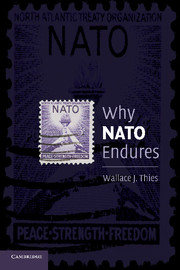Book contents
2 - Rivalry and Community in Interstate Alliances Prior to the Second World War
Published online by Cambridge University Press: 05 June 2012
Summary
The world changes every day, but one feature that appears throughout recorded history is the formation of alliances by states pursuing goals that they cannot achieve on their own. “Alliances are central to international relations: they are the primary foreign policy means by which states increase their security.” As a tool of statecraft, alliances are so pervasive that “every state must have an alliance policy, even if its purpose is only to avoid alliances.”
The sheer number and variety of alliances available for study, however, has proven something of an embarrassment of riches for scholars. Much of what is known about alliances is the product of case studies or historical accounts. Numerous attempts have been made to synthesize the findings of these studies, but the results have been less than impressive. The large number of cases and the use of essentially impressionistic techniques for gathering evidence have meant that for every potential proposition derived from historical and/or case studies, usually one and often several exceptions can be found. Indeed, there is a kind of schizophrenic quality to the literature on alliances. NATO, for example, is often cited for its contribution to solving the Franco-German quarrel, for creating a zone of peace in Western Europe, and for extending eastward that zone of peace by accepting new members. Yet alliances are also often seen as hotbeds of conflict, joining together members with antagonistic interests who are as likely to fight each other as cooperate.
- Type
- Chapter
- Information
- Why NATO Endures , pp. 25 - 86Publisher: Cambridge University PressPrint publication year: 2009



